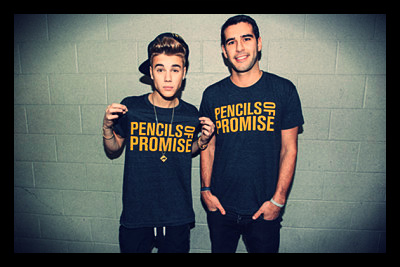
Many young people in countries around the world do not have access to the kind of education Americans have in the U.S. In an effort to support global education, universities can make important additions to their programs.
According to Ethiopian Education Activist Selamawit Adugna Bekele, global education can help solve many social and health problems. For instance, education in Africa could help solve the continent’s problems of corruption, gender inequality and HIV.
Girls, children with disabilities and children living in areas of conflict are particularly at risk for being denied education. Many of the countries that have a large population in poverty are also without public education systems to which impoverished families can send their children.
UNESCO reported in October 2013 that 31 million girls of primary school age are not in school, which is 4 million more than boys of primary school age. The EFA Global Monitoring Report for 2013-2014 found that girls at the lowest level of poverty have the least chance of finishing primary school.
Here are 13 ways for universities to support global education:
- Create video conferences in global classrooms. Video conferences can connect one American class with another class around the world.
- Offer low-cost study abroad opportunities for students studying education. This will show students the forms of education around the world and encourage them to be active supporters of global education.
- Encourage the U.S. to increase foreign aid to global education. Widespread education leads to better economies, which would also help alleviate global poverty.
- Encourage the U.S. and the UN to support governments’ efforts to create public education systems for both boys and girls. This may even include providing help when militant groups oppose education.
- Invite representatives from organizations such as the Global Partnership for Education (GPE) and the VIF International Education, who promote global education, to speak during lectures or events.
- Invite teenagers or adults from less-developed countries to speak about their education during lectures or events.
- Make connections with national and international organizations to set up internships for the university’s students. The students will already be able to envision making global education their career.
- Dedicate a week or more out of each semester that focuses on increasing awareness about the need for global education.
- Create special programs to teach students how to combat global poverty. For instance, Austin College has a Social Entrepreneurship for Poverty Alleviation program that teaches students the skills they would need, such as finances, writing, community development, ethics, race relations, public speaking and human rights.
- Have requirements in certain classes for the students to visit local grade schools and promote a global perspective. This would likely apply to relevant departments, such as English, global studies, liberal studies, business and social work. Methods to promote a global perspective could include crafts, pen pals or showing videos of schools in other countries online.
- Encourage seniors to participate in the Fulbright Program, where recent graduates receive grants to teach English in other countries.
- Create majors and offer degrees that focus on promoting global education.
- Start an Adopt-A-School program, where the university adopts and supports a school in a poverty-stricken area in another country.
There are many ways that the students and staff of universities can use their resources to promote the education of everyone around the world, and campaigns to combat global poverty also contribute to the establishment of global education.
– Kimmi Ligh
Sources: The Olympian, VIF Program, Borgen MagazineFulbright Online, UNESCO Report 1, UNESCO Report 2
Photo: Day Trading Friends




